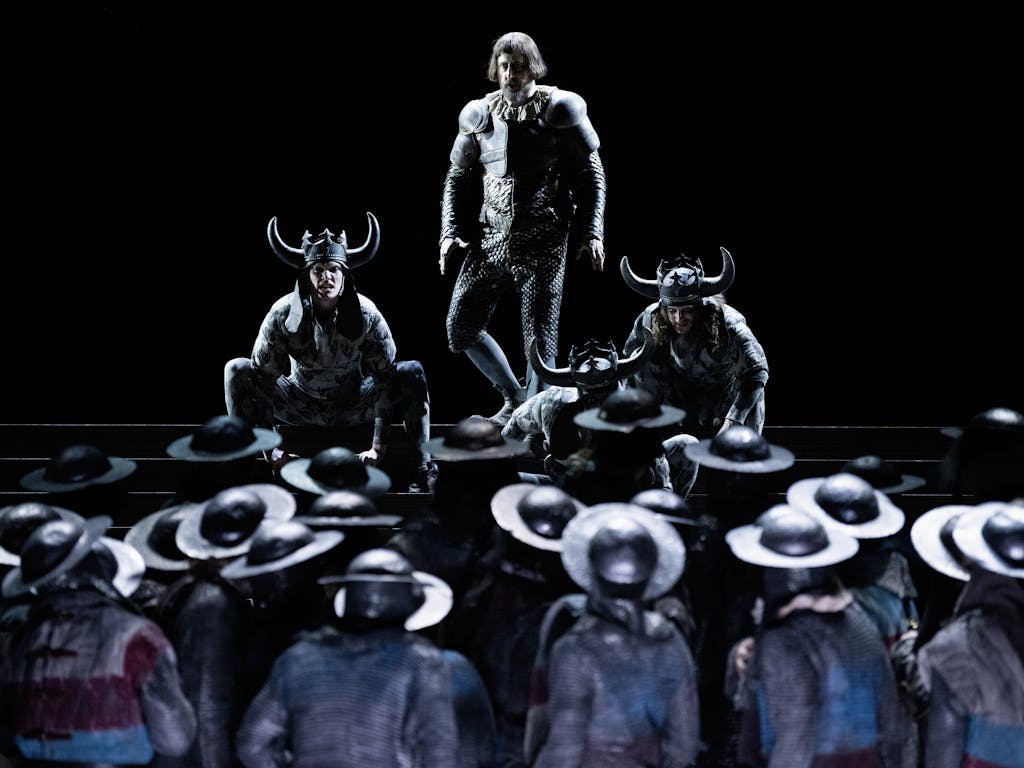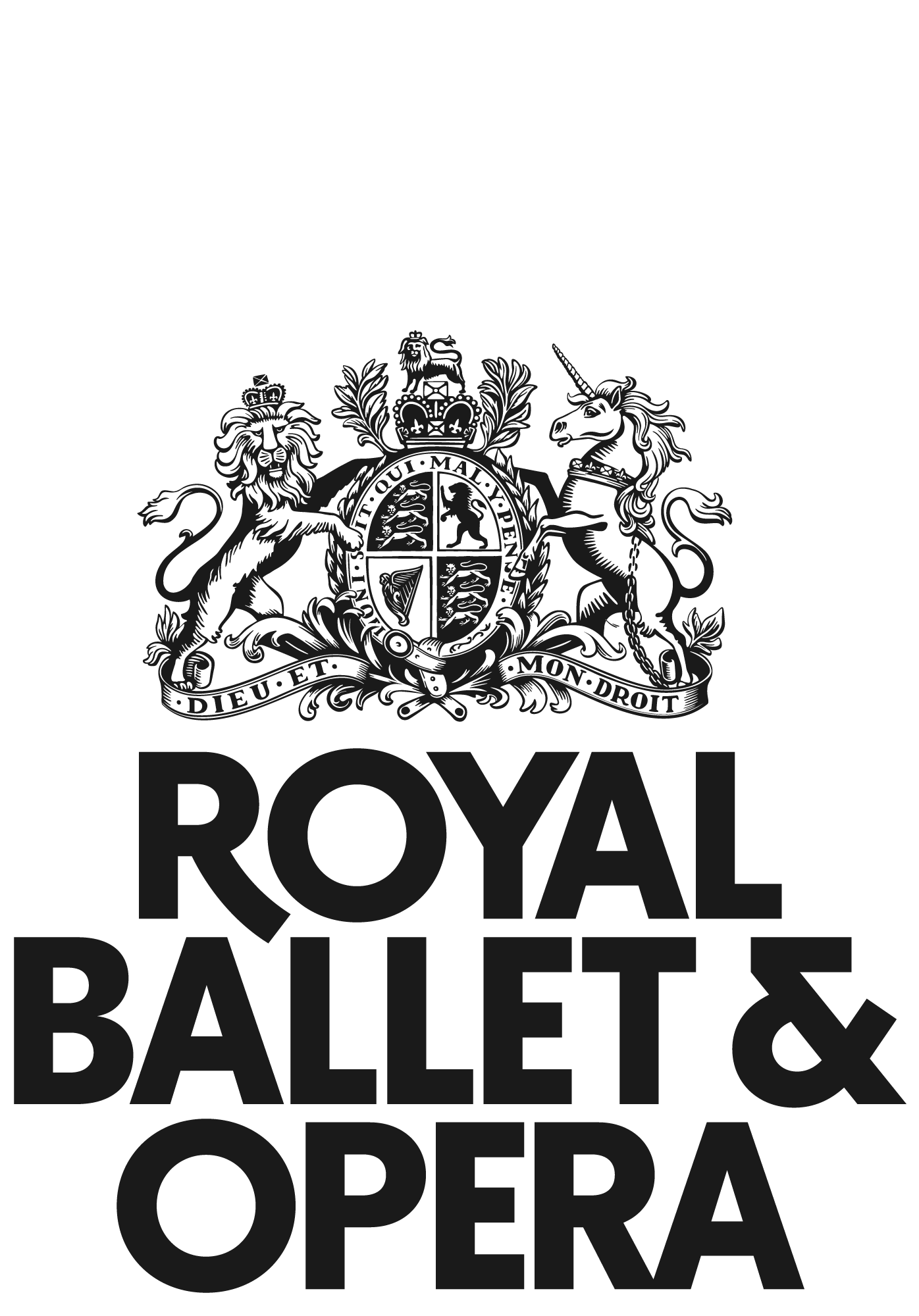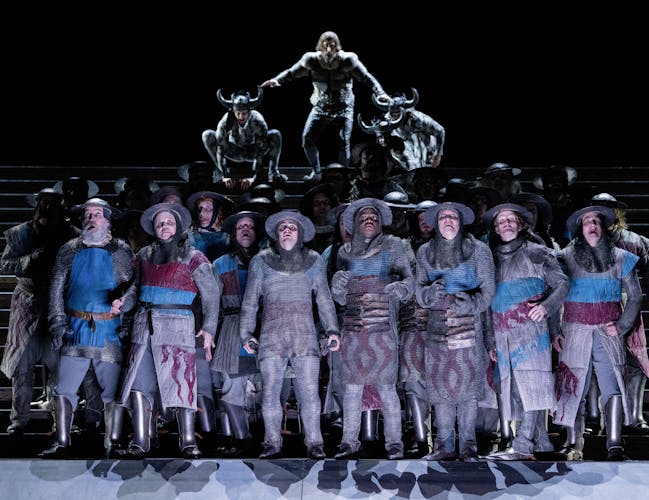Creative Spotlight: Giuseppe Verdi
Giuseppe Verdi (1813–1901) was one of the great masters of Italian opera. His works redefined the genre through their character-driven intensity and taut dramatic structures.
Background
Born in Le Roncole, a small village in Northern Italy, Giuseppe Verdi (1813-1901) showed an early interest in music and began formal studies at the Conservatory of Milan. His first opera, Oberto, conte di San Bonifacio (1839), earned him recognition, but it was his later works such as Nabucco (1842) that catapulted him to fame. Known for his ability to blend powerful drama with beautiful melodies, Verdi created masterpieces like Rigoletto (1851), La traviata (1853), Aida (1871) and Otello (1887). The sheer size of his output is extraordinary; every one of his 28 operas is distinct and original, and many are among the most performed operas in the world.
Verdi’s works often explored themes of love, power and human conflict, and he became a symbol of the Italian unification (or Risorgimento) movement. Indeed, through his artistic contributions – some of his operas interpreted as rallying cries – and subtle involvement in politics, Verdi helped shape the cultural identity of a newly unified nation. His music was also pivotal in redefining the operatic tradition, and his influence extended beyond his time. Verdi continued composing well into his later years, with his final opera, Falstaff (1893), showcasing his mastery of both drama and comedy. He passed away at the age of 87, leaving behind a legacy that remains central to opera repertory today.
Verdi's Early Days
Verdi’s first opera Oberto, conte di San Bonifacio (1839) did reasonably well at its premiere at La Scala, Milan, but his second, the comedy Un giorno di regno (1840) was such a fiasco the whole run was cancelled after only one performance. Fortunately, the impresario at La Scala held a disconsolate Verdi to his three-opera contract and encouraged him to resume work on what would become Nabucco (1842). The opera was a triumph, the 1842 autumn revival running for a record 52 performances. Nabucco marked the emergence of Verdi’s unique voice, with complex central characters, driving rhythmic energy and a dynamic use of the chorus – most famously in ‘Va, pensiero’. Verdi’s next opera, I Lombardi alla prima crociata (1843), was much along the same lines as its predecessor and was received with rapturous enthusiasm – though today is often seen as Nabucco’s poor relation.
Following his La Scala success, Verdi craved a break from large chorus-led operas; a commission for the smaller, more intimate stage of La Fenice, Venice, offered him the perfect opportunity. Ernani (1844) marked a turning point for the composer, displaying the intense focus on intimate, personal conflicts that characterized his later output. Ernani was also the first of many operas Verdi wrote with librettist Francesco Maria Piave. Their next collaboration, I due Foscari (also 1844), continued in Ernani’s intimate vein; it also sees Verdi experimenting with imparting a strong sense of place through his music, another future hallmark. His next two operas returned to the style of Nabucco: the soprano showcase Giovanna d’Arco (1845) marked a return to La Scala; while Alzira (also 1845), for the illustrious Teatro di San Carlo in Naples, received a lukewarm response and was later called by Verdi ‘proprio brutta’ (really ugly). The composer returned to La Fenice with Attila (1846), which again was coolly received – partly due to the patchwork libretto, worked on by both Piave and Verdi’s La Scala librettist, Temistocle Solera, and by its somewhat uneasy sitting between the large-scale and the intimate.
Gallery
Verdi's International Recognition
The following year, 1847, saw Verdi’s first commissions from outside Italy. First came Macbeth, arguably his first true masterpiece. Verdi was obsessive about his adaptation of Shakespeare’s tragedy – for Verdi, ‘one of the greatest creations of man’ – and he brought in his friend Andrea Maffei to rewrite some of Piave’s text. Verdi’s scrupulous attention in rehearsals paid off in a premiere that was one of his greatest successes. He returned to Macbeth in 1864 for a production at the Théâtre Lyrique in Paris, inserting several new numbers including Lady Macbeth’s show-stopping aria ‘La luce langue’. His next opera, I masnadieri, for Her Majesty’s Theatre, London, gathered some of the best singers of the day for a fabulous gala premiere attended by Queen Victoria, but the work has since struggled to find its place in the repertory. For the Paris Opera, Verdi adapted I Lombardi into Jérusalem, making major structural changes, adding much new material and cutting and rearranging the rest. Despite the considerable advances on its predecessor, Jérusalem never managed to oust I Lombardi in Italy. 1848 saw the premiere of Il corsaro, again to a Piave libretto. It was poorly received and is now rarely performed, though the heroine’s Act I aria ‘Non so le tetre immagini’ has become a popular concert piece. The 1848 revolutions across Europe – particularly in Milan – inspired Verdi to write the patriotic La battaglia di Legnano (1849), and its political focus is a precursor to many of Verdi’s later works. By the time of the premiere at the Teatro Argentino, the Austrians had reoccupied Milan, but the opera was still a great success, with the whole last act being encored. As would become common with Verdi’s operas, La battaglia di Legnano was victim to heavy censorship, particularly in the virulently anti-revolutionary era in the 1850s, and the work eventually fell from the repertory. The end of 1849 saw the premiere of Luisa Miller at the Teatro San Carlo. With its subtle dramaturgy and hint of formal experiment, it was another important bridge from Verdi's early work into his fruitful middle period.
Verdi's Middle Period
From Stiffelio (1850) on, Verdi’s operas exhibit the confidence and control of his full maturity. This so-called middle period produced many of his most popular works. Piave’s libretto for Stiffelio shocked censors and audiences alike with its contemporary story about a Protestant pastor who realizes his wife has been unfaithful. The opera contains some impressive music, particularly the final scene, but was beset with censorship problems and was rarely performed. But when it came to Rigoletto (1851), Verdi furiously held his ground against censors wanting to tone down the authority of the count and restructure the title character’s personality altogether. The immediate and immense popularity of Verdi’s music defied all censors – Rigoletto was an instantaneous success, seen more than 250 times in the first ten years. It remains one of Verdi’s most performed operas, its many brilliant melodies including the Duke’s inescapably infectious aria ‘La donna è mobile’.
Il trovatore (1853) was originally conceived as a kind of sequel to Rigoletto, with a mother – Azucena – torn between love for her foster-son and the desire for revenge. Il trovatore was a huge success from its premiere and became Verdi’s most performed work, famed particularly for the thrilling ‘Anvil Chorus’. La traviata (1853) followed hot on the heels of Il trovatore, their premieres separated by a scant two months. Piave supplied the libretto, which again raised hackles with the censors over its courtesan heroine. The premiere was a total disaster, principally due to the unsuitability of the lead singers. Verdi, deeply hurt, was reluctant to allow further performances, but a new production at the Teatro San Benedetto in Venice was an unequivocal success and the opera has since never left the repertory. Verdi’s sympathetic realization of his heroine Violetta Valéry, and a wealth of great tunes, including the Brindisi ‘Libiamo, ne’ lieti calici’ and Violetta’s aria ‘Sempre libera’, have ensured the opera's enduring popularity.
Gallery
Bigger and Bolder
In all his remaining operas, Verdi geared his formidable skills towards constructing bold, imposing works, ambitious in scope while retaining the sense of intimate drama. First up was Verdi’s return to the Paris Opera with Les Vêpres siciliennes (1855). Vêpres is a French grand opera whose taxing roles make it a challenge for any opera house – productions today are a relatively rare treat! Simon Boccanegra (1857) was a commission for La Fenice and was not well received, the convoluted plot subject to harsh criticism. Verdi returned to it in 1879, encouraged by Arrigo Boito who had reworked Piave’s libretto. The result, first performed at La Scala in 1881, was a tremendous success.
Aroldo (1857) was Verdi’s attempt to rehabilitate the controversial Stiffelio; he and Piave relocated the story to 13th-century England and transformed the hero into a crusader. The result loses some of its predecessor’s intensity but is remarkably stylistically consistent, indicating how forward-looking Verdi had been with Stiffelio. Un ballo in maschera (1859) was originally written for the Teatro San Carlo – but furious arguments with the stringent Napolese censors led Verdi to offer it instead to the Teatro Apollo in Rome. Verdi was still forced to make some concessions, relinquishing the story of the real King Gustave III of Sweden for a fictional setting in Massachusetts with Riccardo ‘Governor of Boston’, though many modern productions revert to Verdi's original setting. The opera brilliantly melds Verdi’s Italian style with the French model he had refined in Les Vêpres siciliennes. After the premiere of Un ballo in maschera, Verdi insisted to friends that he had retired – but he couldn't refuse a commission from the Imperial Theatre in St Petersburg. La forza del destino (1862), Verdi’s last collaboration with Piave, wasn’t much of a success on its premiere and Verdi took the opportunity to introduce some major revisions for the 1869 La Scala premiere, replacing the very bleak ending with one that offers at least some promise of salvation. La forza del destino is not often performed, largely due to the extreme difficulty of the three main roles and the massive forces required. It is best known for the overture of the 1869 version and the ‘fate’ motif that stalks the score.
Verdi at the Height of Fame
A major new commission from the Paris Opera led to one of Verdi’s grandest creations – eventually. Verdi worked on Don Carlos (1867) with the French librettists Joseph Méry and Camille du Locle through 1866. Only a month before the premiere it became apparent there was simply too much music and some major cuts were introduced. The opera was even more heavily cut for subsequent performances in Italy. For an 1884 La Scala production Verdi cut the opera’s first act – and then reinstated it for an 1886 Modena production, keeping many of his earlier revisions. Verdi was never entirely satisfied with Don Carlos, but this thrilling opera on idealism and the abuse of power is now seen as one of his finest.
Once again Verdi declared that he had retired, but he was inspired by a scenario by the Egyptologist August Mariette sent to him by Du Locle. Aida (1871) was written for the Cairo Opera House. The premiere was delayed by the Franco-Prussian war so missed the actual opening of the new opera house – but when it was finally seen it was a triumph. Verdi, however, had chosen not to travel to Egypt and took more interest in the La Scala 1872 premiere, which was also a great success. By the standards of Verdi's late work Aida is relatively conservative (particularly in its grand choruses and ballet), but, almost more than any other Verdi opera, it is striking for its distinctive sense of place, thanks to his innovative orchestration and melodic writing.
Gallery
VERDI's RETIREMENT, ALMOST
Verdi retired in earnest after Aida, devoting himself to farming and charitable work. The publisher Giulio Ricordi kept pestering him with ideas, and finally he and Boito piqued Verdi’s interest in 1879 when they suggested an opera based on Shakespeare’s Othello. Boito produced a libretto by the end of that year, but revisions to Simon Boccanegra and Don Carlo came first. Otello (1887) was an immediate success on its premiere and remains one of the most widely respected works in Verdi’s canon. It is one of the masterpieces of his late style, with long passages of through-composed music as well as more traditional arias and duets. Verdi inserted a ballet for the opera’s 1894 premiere in Paris, but this section is rarely performed today.
Verdi closed his career with another Shakespeare adaptation – this time a comedy, his first since Un giorno di regno. It was Boito who suggested the source, The Merry Wives of Windsor, with material from Shakespeare’s Henry IV plays, and he and Verdi worked on the libretto throughout 1890. As with Otello, Verdi took some time to write the score. But he had his reward in Falstaff (1893), another hit from its premiere. The score is striking for its quicksilver changes of mood and for its musical and verbal invention – nowhere more so than in the closing fugue ‘Tutto nel mondo è burla’ (All the world’s a joke). And so Verdi brought to a close his long career, over which his name had become synonymous with Italian opera. It remains so to this day, thanks to the beauty, individuality and brilliance of his masterpieces.
Watch More

Il trovatore on the Main Stage
Verdi’s opera of obsession and superstition returns to the Royal Opera House.
Watch Verdi's works on RBO Stream
Royal Opera House Covent Garden Foundation, a charitable company limited by guarantee incorporated in England and Wales (Company number 480523) Charity Registered (Number 211775)




















